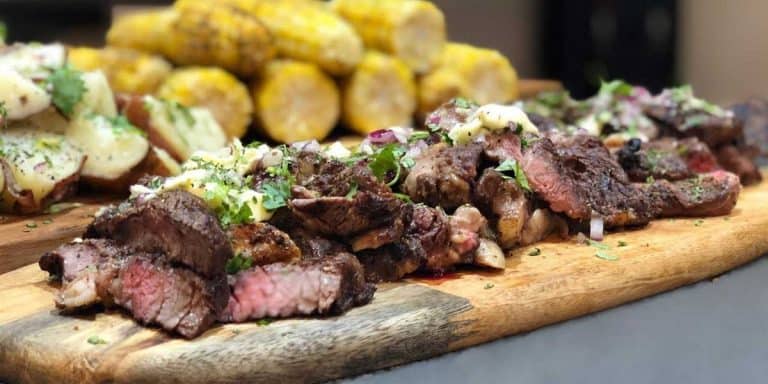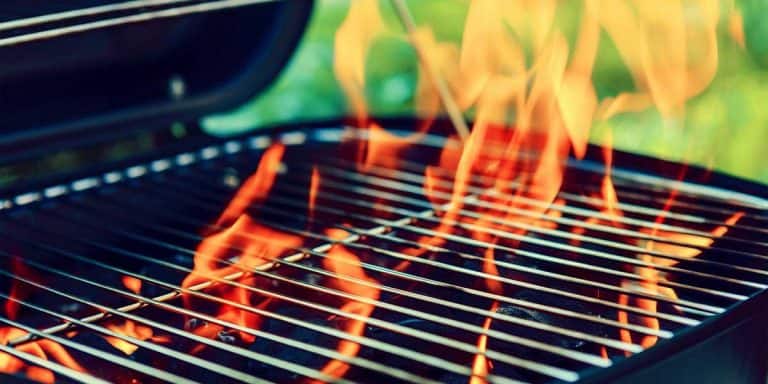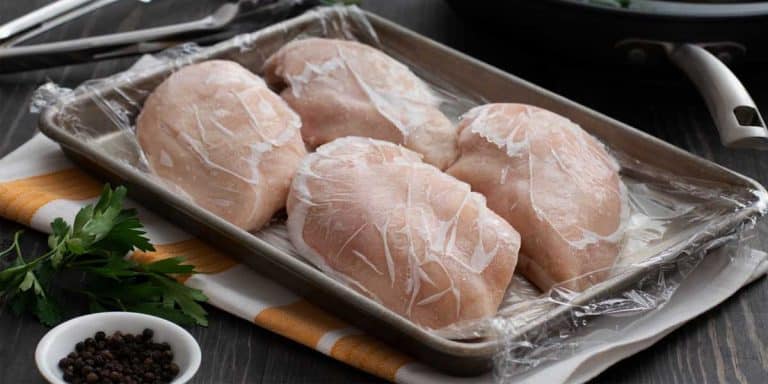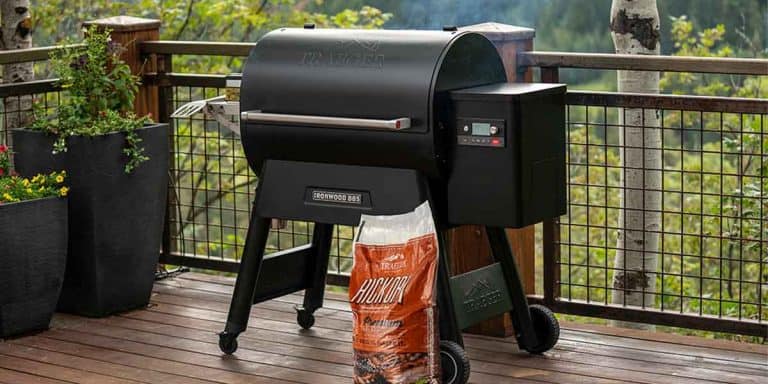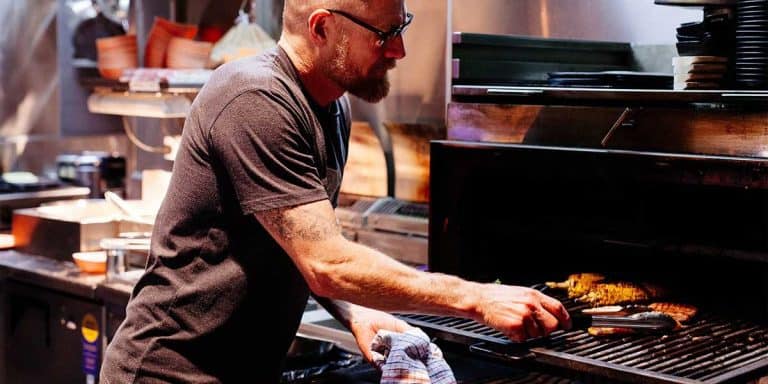Cast Iron VS Stainless Steel Grates
Have you ever wondered why a porcelain-enamel cast iron charcoal grill (with cast iron grate or burner) is generally more expensive than standard stainless steel versions? And what’s the difference between simply cast-iron and ceramic coated cast iron?
Let’s talk about some of the benefits of iron-cast and stainless steel charcoal grill models so you can see the significant advantages and disadvantages of each type and make a better purchase.
Cast Iron VS Stainless Steel Grill

You might have heard that cast iron distributes the heat better than stainless steel and provides a more even cooking temperature across the whole grilling surface. It also minimizes flare-ups and burnings of food.
However, the gap between the fully cast iron charcoal grill’s price (Check Stok Charcoal Grill) and lower-end smokers is huge (often 1.5 or 2 times more expensive) that many beginners often choose over budget options. What they don’t realize is that stainless steel grates cost more in the long run because they are less efficient than thick cast-iron grates. And if you have been grilling barbecues for some time or ask someone who has experience, they will tell you that charcoals are not cheap; a typical cook for a large family may cost $5 in buying charcoal lumps or wood burners. Most of the best gas grills, wood pellet grills etc., come with cast-iron grates.
Another advantage of cast-iron over a stainless charcoal grill is that it prevents sticking of food, especially when you grill BBQs such as chicken fillets, turkeys, bratwurst, and other meat with fatty skin outside.
Stainless steel grate and burner, on the other hand, have the advantage of being light and easy to transport or move around your house. So apart from being an economic investment, they also provide more mobility.
This is less widespread information, but did you know that grilling in a cast-iron metal grate (also referred to as a gridiron) also potentially increases the iron dietary intake? This phenomenon occurs when you cook food with a high level of acidity, such as lentils, tomatoes, steaks, and meat cooked with rich acid sauces or marinades.
It’s been estimated that 2/3 of Americans don’t get enough iron in their daily intake. This is especially true for women who are more prone to lack of iron because of blood loss through menstruation (iron is essential for healthy blood circulation and efficient oxygen distribution to our brain).
The longer you grill and hotter the cooking temperature, the higher chance of the barbecue picking up the iron from the grate. Note: this only happens when you have a bare cast iron grill grate, not those with ceramic coating (porcelain-enamel grates).
Advantages And Disadvantages Of Stainless Steel VS Cast Iron
Cast Iron Grates Advantages
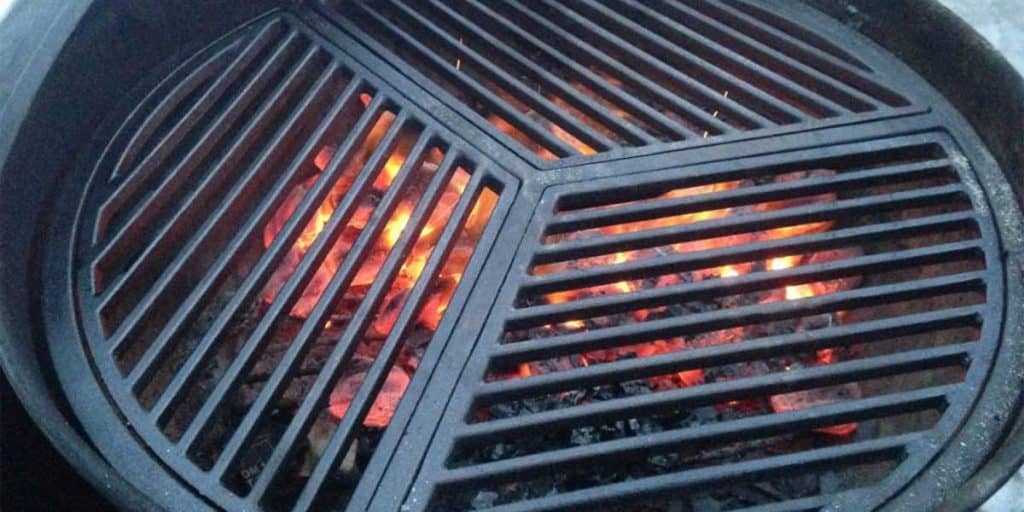
I. Retains Heat: Cast Iron grates have the benefit of using stovetop cooking and outdoor grilling. When the grate touches the meat, you will get a good heat transfer and sear. This will help you cook the meat thoroughly when your charcoal is about to burn out.
II. Transfer Heat Directly: Any ingredient that touches the surface of the grate will be well seared. This will benefit the food that has a short cook time but will benefit from a darker outer layer.
III. Last For Decades: If taken proper care of, cast Iron grates may never need to be replaced.
Cast Iron Grate Disadvantages
I. Heavy: Cast Iron grates are heavy, making them difficult to move around and remove the charcoal under them. Some Cast Iron grates may require you to use a special tool to lift and move the grate around.
II. Rust Quickly: Even though cast iron grates can last for decades, they can get rusted pretty quickly. Humid weather can cause the grate to rust. To avoid rusting, you should move the grate inside your home, which will be a task if you use the grate regularly.
III. Cleaning: Cleaning a cast iron grate takes extra effort; you have to season the grates regularly to maintain the finish of the grates.
Stainless Steel Grates Advantages
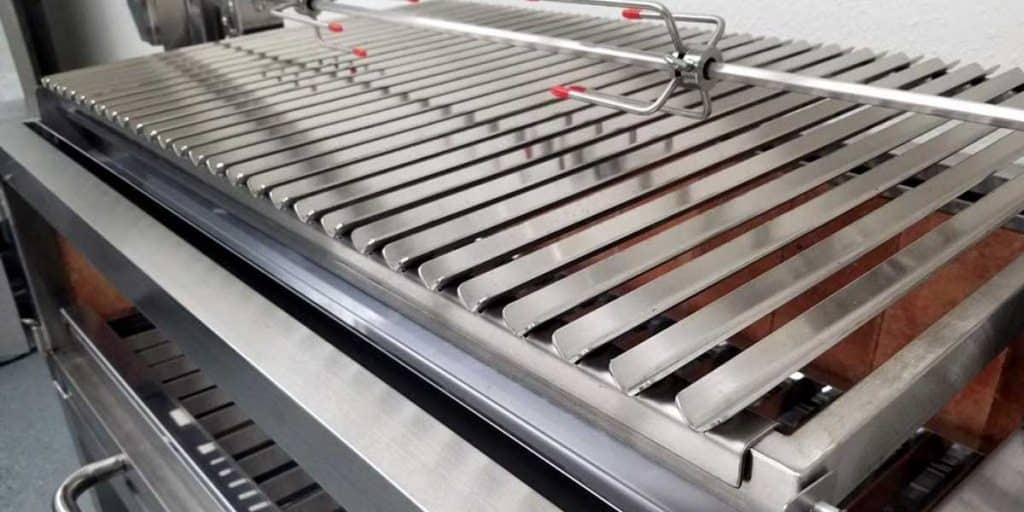
I. Quick Heating: Heating the stainless steel grates does not take a lot of time, which means it takes less time to preheat, enabling the user to cook faster.
II. Don’t Corrode Easily: Unlike cast-iron grates that get rusted quickly, stainless steel grates can be left in the open as they won’t get rusted quickly.
III. Easy To Maintain: Maintenance is very easy for stainless steel grates; you just have to wash the grates regularly without any special items.
Disadvantages Of Stainless Steel Grates
I. Doesn’t Retain Heat: Stainless steel does not retain heat and cools off quickly. This means that the temperature will drop rapidly once the heat source has been removed.
II. Not Durable: Stainless steel grates don’t last as long as cast-iron grates. This is one of the reasons why they are much cheaper than cast iron grates.
III. Non-Stick Grates Don’t Last – Stainless steel gets rougher as you use them. This will affect the non-stick quality stainless steel has, and this can also cause the base of some dishes to get burnt.
IV. Uneven Cooking: Stainless steel grates can warp over time if they are not taken care of. This will provide an uneven cooking surface and will affect how different parts of the dish are cooked.
Porcelain-enamel Coated Or Cast Iron Charcoal Grill?
As explained above, if the grate is ceramic coated, it won’t give you the health advantage of cooking with cast iron. On the other side, porcelain enamel cast-iron grate and burners are much more durable and solid than their stainless steel counterparts. This is due to a protective coating that eliminates rusting and corrosion from leaking fat grease that drips from the food.
If you keep the charcoal grill outdoor most of the time, it also subjects to harsh weather conditions, such as abrupt temperature change, moisture, and acidity from the rain, heating from direct sunlight, and many more. This is when the porcelain layer comes in handy and valuable, prolonging your grill’s lifetime and improve grilling performance. Many stainless steel charcoal burners degrade very quickly after a few months of use and become less efficient at retaining inside temperature because of damages caused by the external atmosphere.
Conclusion
It’s evident that cast iron charcoal grills are more beneficial than stainless steel models. However, there is a considerable price gap between the two. If you already own a charcoal grill or smoker, but it does not come with a cast-iron grate, you can always buy a separate one from major manufacturers such as Weber or Lodge cast-iron grates. Both brand names provide high-quality charcoal grill parts in various shapes and sizes to fit your particular grill model.


